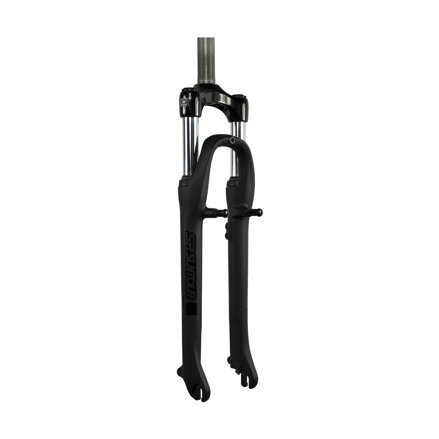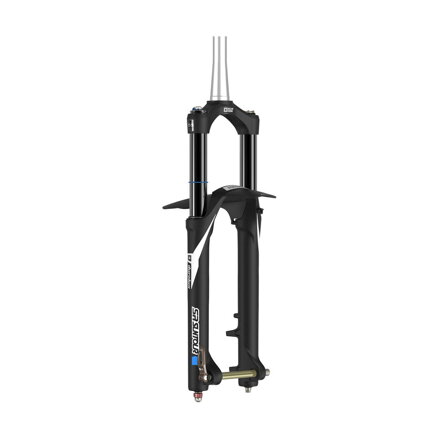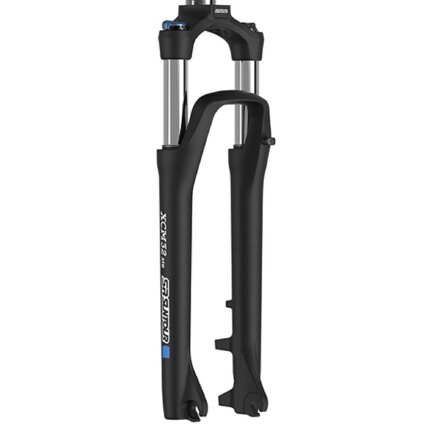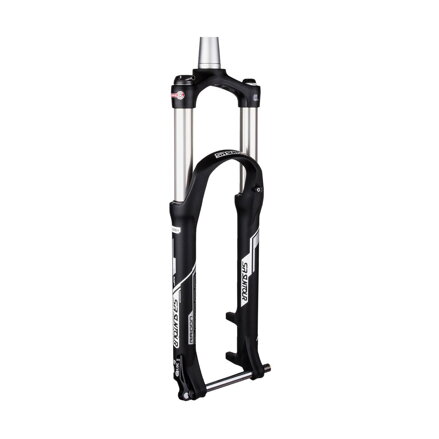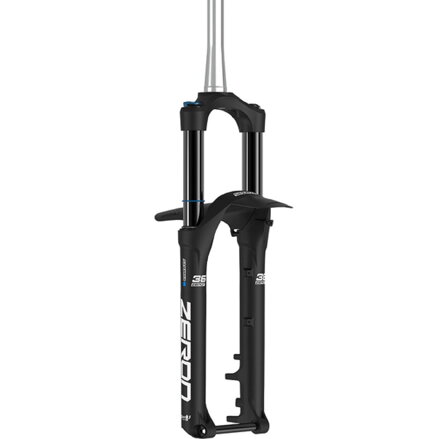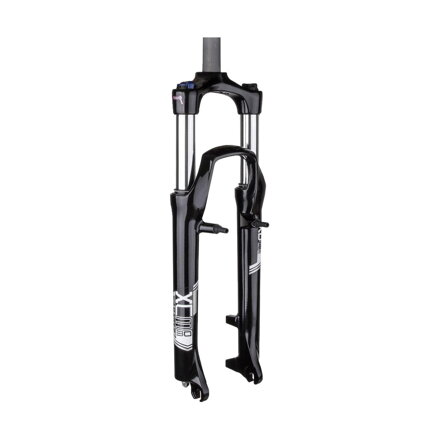How to choose correct suspension fork

Before purchasing a new suspension fork, you should ask yourself a fundamental question: how much are you willing to invest in the fork and how will you be using it?
Type of Suspension
Suspension forks are divided into spring and air types. As the name suggests, a spring fork operates on the principle of two springs inside the fork that compress under load. A spring fork can be adjusted—specifically, the oil pass-through in the chamber, which affects how quickly the spring returns to its original position. Spring forks are cheaper, but the downside is that the springs can lose their elasticity and wear out over time.
In contrast, air forks are more expensive, but the desired effect of suspension is long-lasting. To adjust the air pressure, you will need a special pump for the fork if you want to change it. Riding with an air fork is more comfortable, and they often include a so-called lockout—a lever placed directly on the handlebars that ensures the fork does not compress while riding on the road. For regular MTB activities, we definitely recommend air forks.
Fork Travel
A bicycle fork can have different travel lengths—80-100mm should suffice for typical mountain excursions. However, if you are choosing for more adventurous trails, a longer travel fork is recommended, as it will make riding more comfortable and safer.
Fork Attachment
Once you have decided on the type of fork, another important factor is how the fork attaches to the hub. You can either have a quick-release attachment or a thru-axle of 100mm. If you are looking for a BOOST version that has 110mm, it is always indicated in the product description.
Riding Style
Each fork also has a description that indicates the type of riding (MTB forks, XC, trekking, gravity) it is suitable for. Finally, do not forget about the type of brake attachment when selecting. There is a difference between using rim brakes, v-brakes, or disc brakes. The type of attachment is always visible in the product image.
In the case of using disc brakes, we also distinguish whether the fork is intended for Post mount, IS, or flat mount attachment. If you have a frame designed for flat mount, using adapters will allow you to fit a post mount/IS caliper on the fork. However, if you have a post mount/IS frame, it will not be possible to use a flat mount caliper attachment.
Bicycle Frame Size
When selecting the size, it is essential to take into account the frame of your bicycle. We offer all sizes, including 26", 27.5", and 29" forks. Additionally, the diameter of the fork steerer is extremely important. Cheaper and older models typically have a diameter of 1-1/8", but currently, tapered steerer tubes of 1-1/2" are more popular. If your bike frame has a tapered steerer, you can also choose a narrower 1-1/8" steerer with the use of an adapter.
In conclusion, we wish you a successful selection, and if you have any questions while choosing, please do not hesitate to contact us.
Suspension and fixed bicycle forks
-
Add to Favourites
SR SUNTOUR Fork M3010-P 700C 63 TS black matte
SR SUNTOUR Fork M3010-P 700C 63 TS black matte
6+ IN STOCK (6 pcs)
32,36 €
26,31 € excl. VAT
-
Add to Favourites
SR SUNTOUR Fork XCE-P 29 100 TS black matte
SR SUNTOUR Fork XCE-P 29 100 TS black matte
6+ IN STOCK (6 pcs)
38,12 €
31 € excl. VAT
-
Add to Favourites
SR SUNTOUR Fork DUROLUX Boost EQ R2C2 PCS 160 15QLC2Ti-110 27.5 CTS black matte
SR SUNTOUR Fork DUROLUX Boost EQ R2C2 PCS 160 15QLC2Ti-110 27.5 CTS black matte
6+ IN STOCK (6 pcs)
214,80 €
174,64 € excl. VAT
-
Add to Favourites
SR SUNTOUR Fork XCM32 LO DS 100 27.5 TS black matte
SR SUNTOUR Fork XCM32 LO DS 100 27.5 TS black matte
6+ IN STOCK (6 pcs)
78,60 €
63,90 € excl. VAT
-
Add to Favourites
SR SUNTOUR Fork RAIDON32 Boost RLR 120 15QLC 27.5 CTS black matte
SR SUNTOUR Fork RAIDON32 Boost RLR 120 15QLC 27.5 CTS black matte
3 pcs IN STOCK (3 pcs)
233,11 €
189,52 € excl. VAT
-
Add to Favourites
SR SUNTOUR Fork ZERON36 Boost EQ 3CR 160 15LH-110 27.5 CTS black matte
SR SUNTOUR Fork ZERON36 Boost EQ 3CR 160 15LH-110 27.5 CTS black matte
3 pcs IN STOCK (3 pcs)
268,25 €
218,09 € excl. VAT
-
Add to Favourites
SR SUNTOUR Fork AXON RLR 100 15QLC32 29 TS black glossy
SR SUNTOUR Fork AXON RLR 100 15QLC32 29 TS black glossy
5 pcs IN STOCK (5 pcs)
244,83 €
199,05 € excl. VAT
-
Add to Favourites
SR SUNTOUR Fork AXON32 Boost RLRC 100 15QLC2-110 29 CTS black matte
SR SUNTOUR Fork AXON32 Boost RLRC 100 15QLC2-110 29 CTS black matte
5 pcs IN STOCK (5 pcs)
315,12 €
256,19 € excl. VAT
-
Add to Favourites
STOCK CLEARANCE
SR SUNTOUR Fork NRX-D-DS-LO-AIR 700C 63 TS black matte
SR SUNTOUR Fork NRX-D-DS-LO-AIR 700C 63 TS black matte
Last 1 piece IN STOCK (1 pcs)
83,07 €
67,54 € excl. VAT
-
Add to Favourites
SR SUNTOUR Fork XCM30 LO P 100 26 TS spring black glossy
SR SUNTOUR Fork XCM30 LO P 100 26 TS spring black glossy
OUT OF STOCK
79,95 €
65 € excl. VAT





2025-01-12-19-39-33.png)
